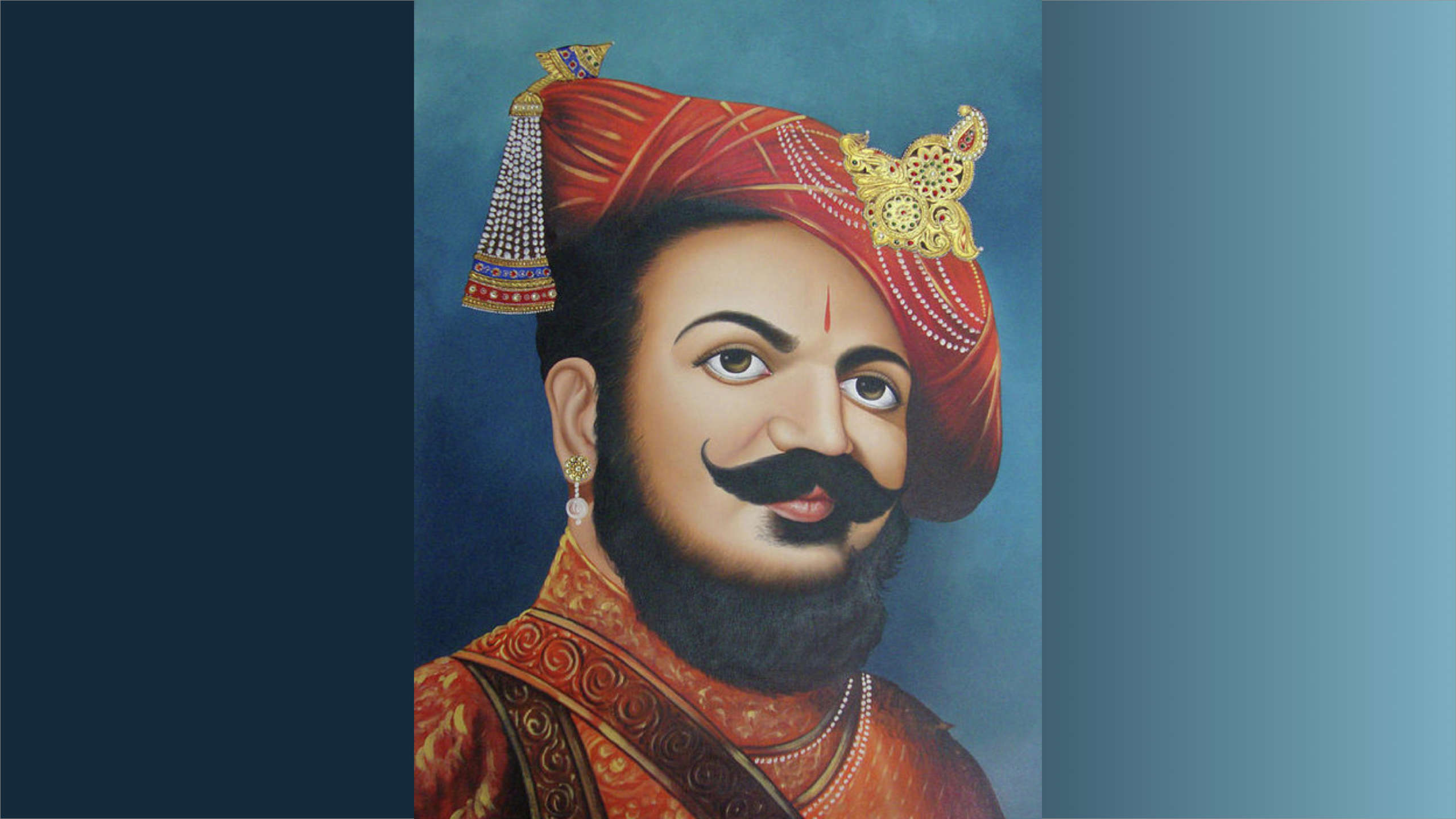Baji Rao was not only one of the most influential generals in Maratha history, but one of the guiding forces towards achieving Hindavi Swarajya.
By Sreejit Datta, Assistant Professor, Director of Civilisational Studies Practice & Resident Mentor at Rashtram.
Image Source: By B K Mitra
Bajirao I, the unbeaten, was born on this day at Sinnar in the present-day district of Nashik in Maharashtra. Never defeated on the battlefield, Bajirao I stands throughout history as the most influential among the nine Peshwas of the Bhat Peshwa Family and the true bearer of Chhatrapati Shivaji Maharaj’s dream of establishing the Hindavi Swarajya – India’s complete political and spiritual independence from foreign rule. Bajiao’s father Balaji Vishwanath was the Peshwa (prime minister) during the times of Chhatrapati Shahu Bhonsle, the grandson of Shivaji Maharaj, and had gained eminence in the court as the king’s most trusted counselor. Under the shadow of his eminent father, Bajirao became skilled at diplomacy, statecraft, and war from an early age and went on to be appointed as the Peshwa by Shahu Maharaj – the fifth Chhatrapati of the Marathas – at the tender age of twenty, thus filling in the empty seat left by the demised Balaji Vishwanath.
By this time in history, around 1720, the groundwork for overthrowing the Mughal Empire had already been laid out under the leadership of Balaji Vishwanath. Several ambitious Maratha expansionist campaigns were in progress and bevies of brave, worthy, but restless Maratha chieftains were being cleverly organized and integrated into the Maratha Empire in making by allotting every chieftain a different field of operation. At the same time, the throne of the Mughal emperor in Delhi was tottering due to a rapid change of power from one ineffectual occupant to the next. Bajirao I quickly rose to be at the helm of military affairs of the Marathas during this phase and proved his worth in a series of battles, securing the pride and power of the Marathas.
In his long and illustrious military career, Bajirao most notably vanquished the Nizam-ul-Mulk Asaf Jah of Hyderabad at the battle of Palkhed (1728) to secure the position of King Shahu against the threats of the Sambhaji II faction of the Marathas which was then being supported by the Nizam; defeated Muhammad Bangash – a Mughal commander in Bundelkhand; and fought in the battles of Malwa, Dhar, Aurangabad, Firozabad, among others, against the enemies of the Maratha Empire.
He bore the true legacy of Chhatrapati Shivaji’s mission of establishing Hindavi Swarajya by giving a call for onward march to Delhi, for the purpose of ushering in the Hindu Pad-Padshahi. At an assembly of the Maratha Confederacy, he is said to have spoken thus to Chatrapati Shahu:
“Towards Delhi! Towards Delhi! We will press and strike straight at the root of this growth of foreign rule. Why do we stand hesitating and faltering here? Press on, the hour of the Hindu Pad-Padshahi has come!
Chhatrapati Shahu did give his blessings to Bajirao’s army; and the rest is history. The Maratha armies carried the Bhagwa banner – once raised by Shivaji Maharaj and under which Shivaji Maharaj himself fought – throughout the plains and plateaus of Bharatavarsha. From the Kabul valley in the Northwest to the fertile plains of Bengal in the East, the booming chants of “Har Har Mahadev” by the Maratha armies tore the skies asunder and struck fear in the hearts of the foreign plunderers, colonisers and the minions of the Mughals.
A glorious chapter in the history of Bharat was thus forged by the blazing sword of Bajirao I.

